I’ve called Sarajevo a city of contrasts not because of the juxtaposition of old and new such as the remains of a 16th century inn 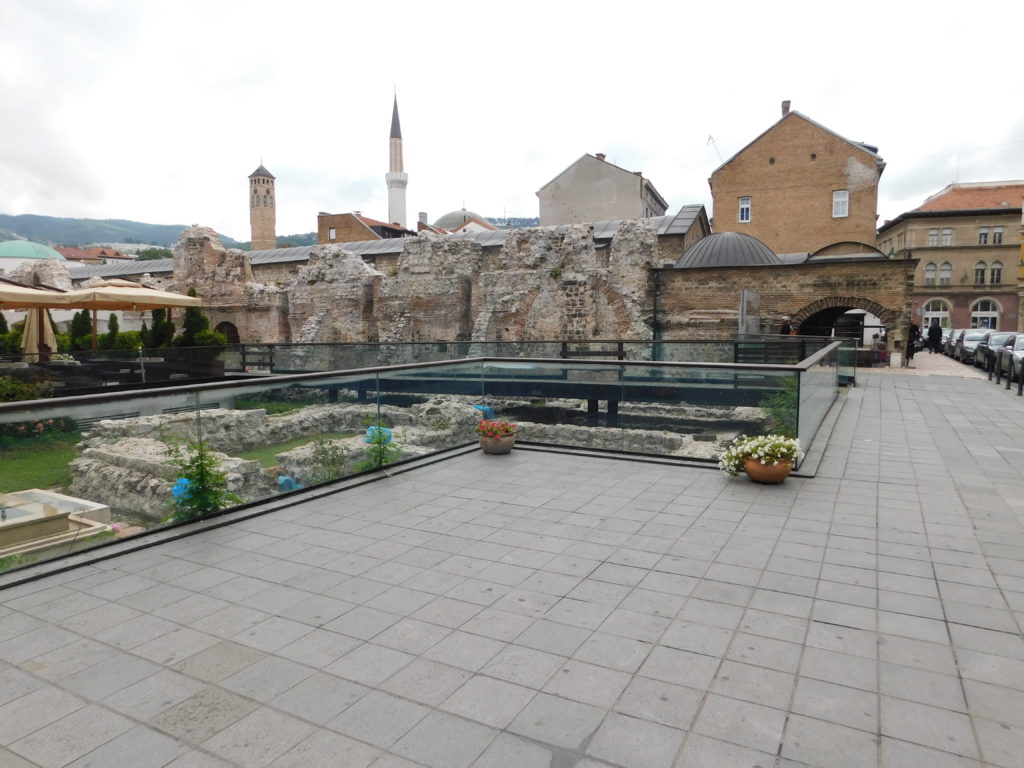 excavated mere meters from our newly renovated hotel;
excavated mere meters from our newly renovated hotel;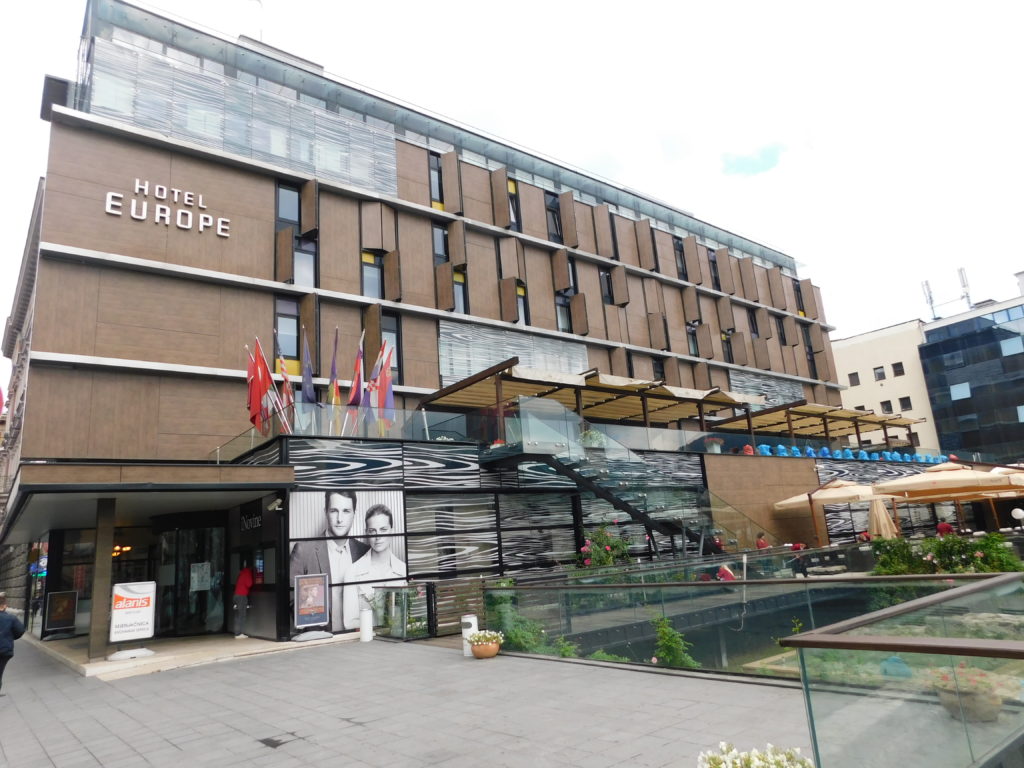
nor because the city has always had a reputation for religious tolerance with a mosque, Catholic and Orthodox Churches, and a synagogue all nestled in close proximity to one another;
nor because it bills itself as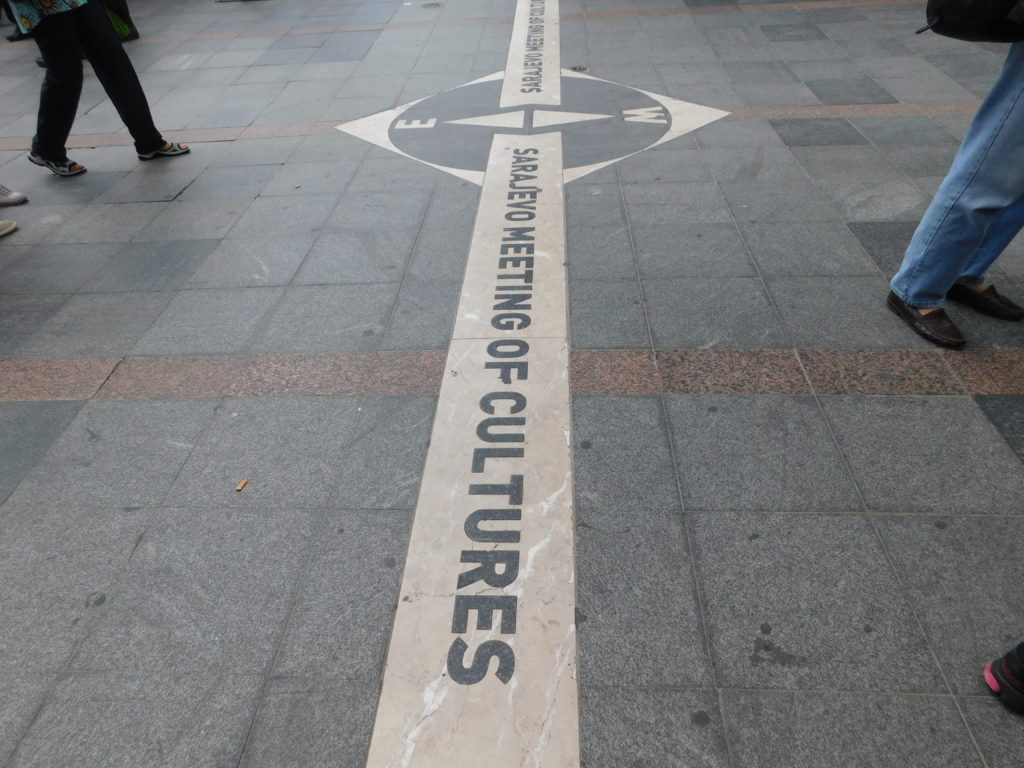
– where east meets west. For me, Sarajevo is a city of contrasts because it is at once among the most heartbreaking and heartwarming places you or I or anyone will ever visit.
The city has a long and often painful history. It’s likely best known for its place in three major historical moments – the assassination of Austrian Archduke Franz Ferdinand in June 1918 that lit the final fuse and ignited World War I, hosting the winter Olympics in 1984, and suffering the four-year siege by Serbian paramilitary forces and the JNA from 1991-1995. Scars and reminders of that war are ubiquitous, indeed, almost omnipresent throughout Sarajevo but still the city crackles with vibrancy and life. We met people who were subject to horror and unimaginable deprivation but who today live in tolerance and with a measure of joy. In my memory, Sarajevo and its citizens will stand like monuments to the resilience of the human spirit.
Please keep this in mind as you read about the next few days because the story will, at times, necessarily take some unpleasant turns.
Before I go any further, let me thank Diane for convincing me to walk the short two blocks from the hotel to the Latin Bridge before breakfast so I could snap this unsullied photo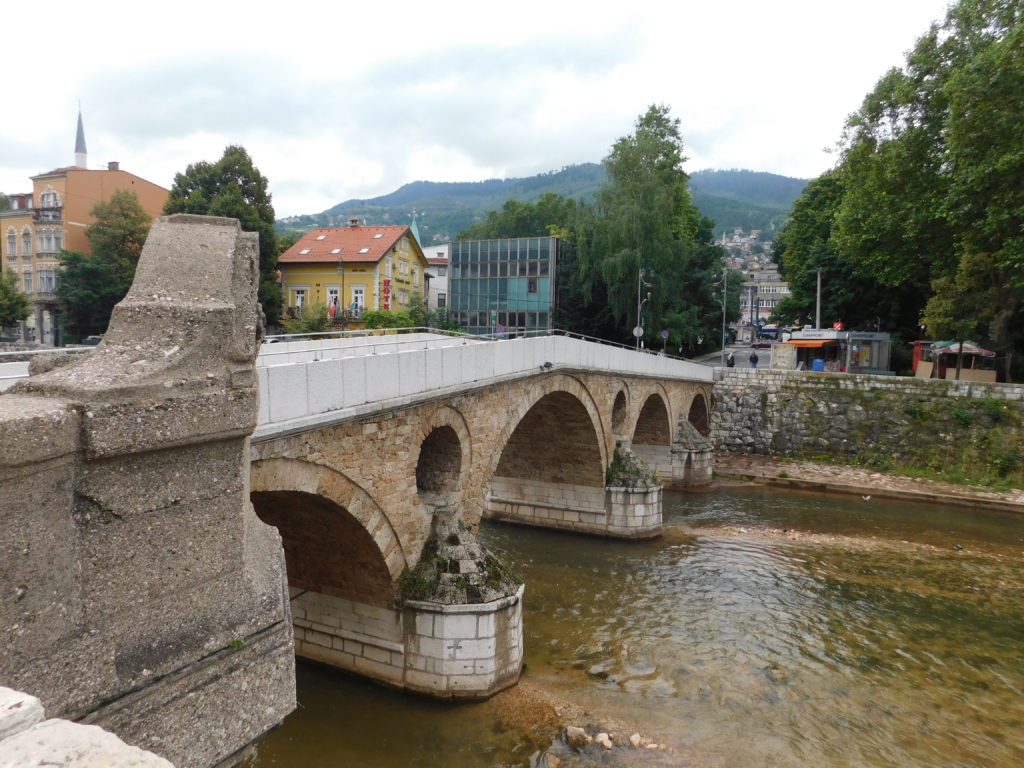
of that bridge over the Miljacka River that runs through the city’s center.
Our walking tour began here with a discussion of the history leading up to the assassination of Franz Ferdinand near this spot in 1918. Since the city as we know it today was founded in 1461, I won’t be following that tour along its linear unstuck in time path. As I hope you’ve learned, the history of this area is jumbled enough that turning us all into Billy Pilgrim would, I think, only add to the confusion. Thus, I’ll proceed chronologically.
From the beginning.
The first evidence of human habitation in the area in and around Sarajevo was discovered by Hungarian builders in 1893 during the construction of a school. Archaeologists identified the ceramics and pottery designs dubbing it the Butmir culture (remember this name). Today, it would be near the Sarajevo airport. They dated the fragments as being from between 5100 and 4500 BCE. Most traces of the Butmir had disappeared by about 2400 BCE with indications that they had been conquered by the Illyrians who formed several kingdoms on the Balkan peninsula.
Eventually, the Romans conquered the Illyrians and built a major road that ran through the Miljacka River valley connecting the area to the Dalmatian coast – though they did little to build up the area itself. The most important Roman settlement of the time was called Aquae Sulphurae and was also located near the present-day airport about 10 km from the city center. Over the years, numerous Roman artifacts have been found in Sarajevo proper. However, it was the Ottomans who founded the city as we know it today in the middle of the 15th century with 1461 generally used as the founding date. They also gave the city its name.
What’s in a name, part three.
In that year, the first Ottoman governor, Isa-Beg Ishaković, began the transformation of a group of villages into a state capital. By 1463 he built the core of the city’s Old Town district, including a mosque, a marketplace, a public bath, a hostel and, on the river’s south side, the Governor’s castle (Saray), which helped provide the city its present name. (A few words on the etymology: It’s generally accepted that saray {which means castle or palace in Turkish} gave the city the first part of its name. Two competing theories exist regarding the evo suffix. Our local guide Dino told us one that is widely accepted. In his version, gardens – {more accurately a plain} surrounded the castle and the Turkish word for that is ovasi. The first recorded instance of saray ovasi was in 1455. A competing theory is that the source for “evo” is a Slavic word used in the designation of place. Thus, saray evo or Place of the Castle. The first known written appearance of Sarajevo occurs in 1507.)
Gazi Husrev-Beg.
The presence of the Ottomans and the expansion of the city served as a bit of a blessing for another group of Semitic people who were expelled from the Iberian Peninsula in 1492. At least a small number of Jews had settled in Sarajevo prior to 1492 because there is evidence that they had built a synagogue at least as early as 1491. (Most of the records from this time were destroyed in a fire in 1510 – one of many conflagrations that have swept the city over the centuries – but a recovered fragment of one document indicates the presence of the house of worship.) The synagogue was rebuilt under the auspices and by the generosity of Gazi Husrev-Beg (or Bey) one of the most important people in the history of Sarajevo and almost certainly the most important figure in the city in the 16th century.
Gazi Husrev-Beg was the sanjak-bey or governor of this region of Bosnia for most of the period from 1521 to 1541. He was also a military commander with many notable victories which earned him the title of Gazi – an honorific Ottoman title given to successful warriors. Husrev-Beg was responsible for a great deal of construction in Sarajevo including a maktab and a medresa (primary and secondary schools), a hammam (public bath), an imare (a place that served the poor), a library, one of the first water supply systems in Europe, and the Gazi Husrev-beg Mosque. In addition, the old Orthodox church near his mosque was rebuilt during his time as governor and, as already noted, he endowed the second Jewish synagogue.
In addition to the religious and spiritual contributions, he was responsible for expanding and adding improvements to the baščaršija or main marketplace established under the reign of Isa-Beg Ishaković. Husrev-Beg built a bezistan or roofed market that I found to be 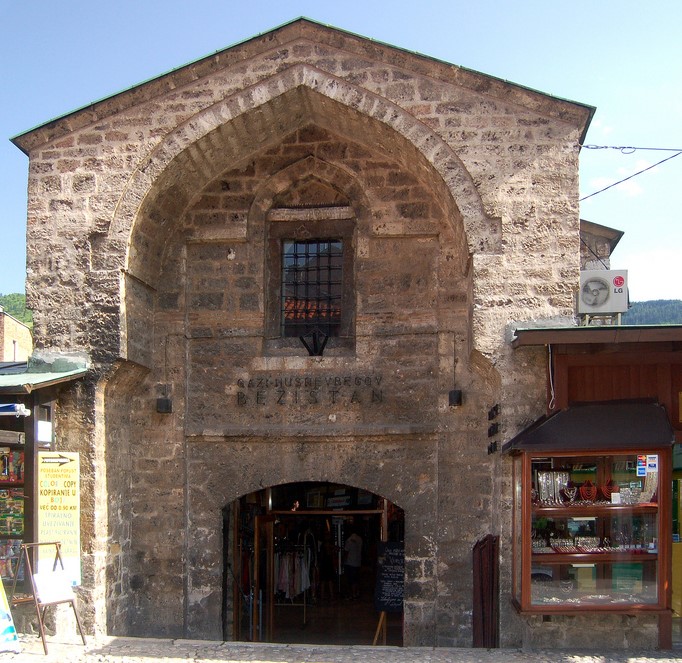
one of the most interesting spots in the baščaršija. The excavated 16th century inn you saw in the first photo of this entry was part of the Sarajevo Tashlihan a giant caravansary also built during his time.
The mosque was constructed between 1530 and 1531 and is the largest historical mosque in B&H. It’s one of the best representations of early period classical Ottoman architecture and is reported to be the first mosque in the world to have received electricity and electric illumination. This addition came under Austro-Hungarian rule in 1898.
The minaret and dome of the mosque are visible from much of the city:.
Inside the mosque’s courtyard is a muwaqqit hana which is a building where instruments are placed to accurately measure lunar time which is of importance for Muslims for the akšam-maghrib or end of day prayer that begins immediately after sunset. (The muwaqqit is the individual responsible for making the measurements.) Another particularly interesting facet of the mosque is the presence of a clock tower on its western side just outside the courtyard.
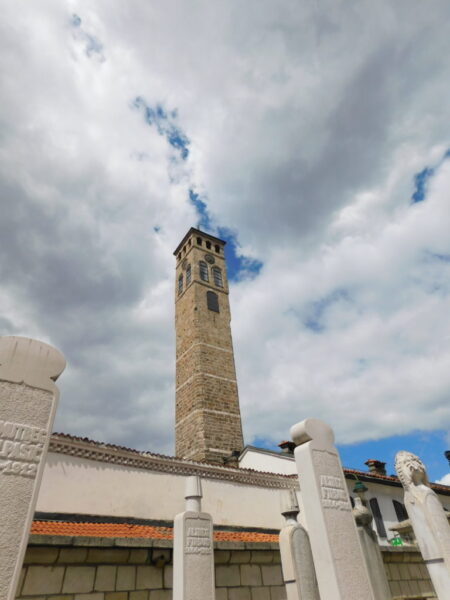
Although the photo doesn’t clearly show the clock face (there’s one on each side of the tower), the time on the clock represents the number of hours until sunset so Sarajevo’s citizens always know how much time remains before the end of day prayer. The mosque was severely damaged during the Serbian siege that began in 1991 because the Serbs regularly targeted the city’s historical and cultural centers. Reconstruction began in 1996 almost as soon as possible after the cessation of hostilities.
Let’s go shopping!
The centerpiece of the Stari Grad or old city is the baščaršija (pronounced BAHSH-char-Shi-ya). At its peak, this marketplace stretched for more than six kilometers, hosted more than 77,000 merchants, and had more than 700 operational crafts regularly conducting business here. The centerpiece of the main market square is the Sebilj (SAY-bih-li) – a fountain originally built in 1753. The wooden structure seen today was built in a pseudo-Moorish architectural style in 1891 by a Hungarian architect. (Stay tuned for some comments about pseudo-Moorish architecture.)

The public still drinks from the fountain to this day though we did not because Damir had cautioned us against drinking the water in B&H.
You, dear reader, can take a drink break before my newly shortened post looks at life in Sarajevo in the 16th and 17th centuries.
Note: In keeping with my 2022-2023 reformation of the blog into shorter entries, backdated to maintain their sequence, any comments on this post might pertain to its new configuration. See the full explanation in the post Conventions and Conversions.
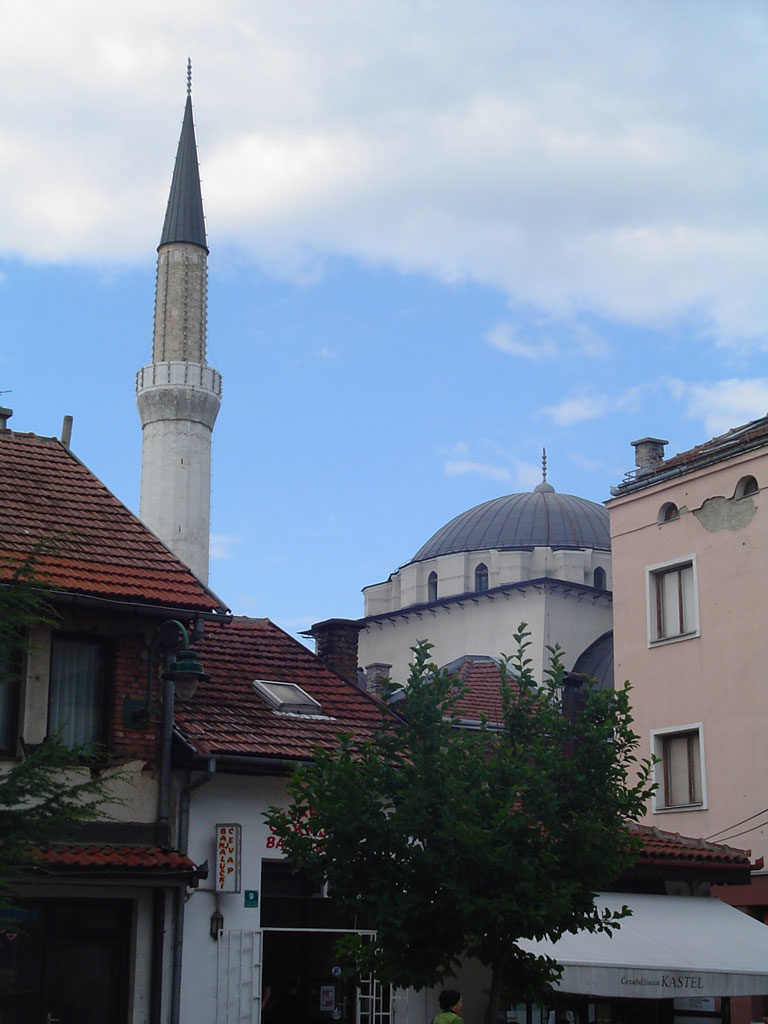
thank you for this interesting narrative. Look forward to getting your e-mails Todd
I’m happy to know you’re enjoying this, Trina.